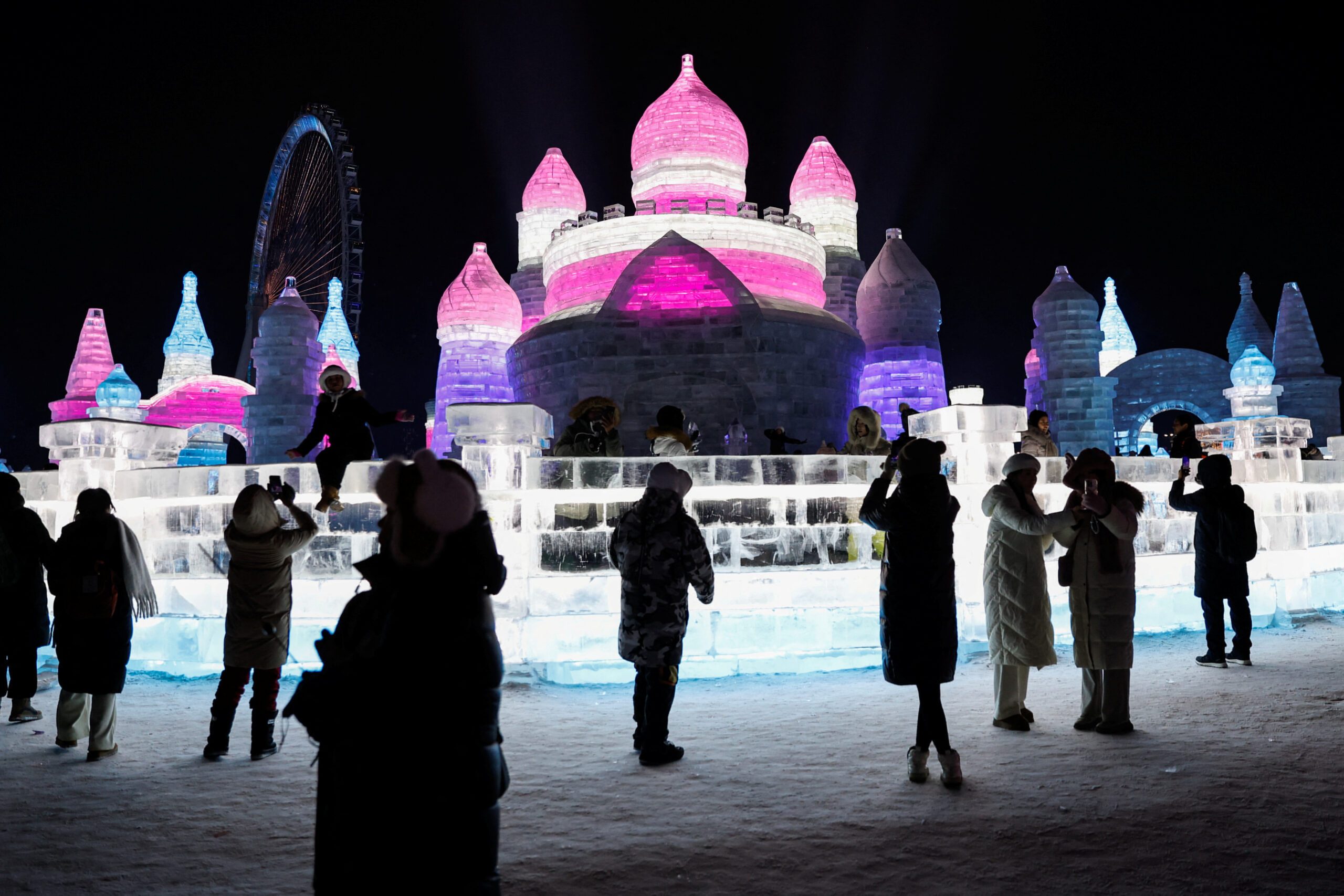SUMMARY
This is AI generated summarization, which may have errors. For context, always refer to the full article.

HARBIN, China – China’s annual Ice and Snow Festival, with its fairy-tale ice sculptures, opened on Friday, January 5 attracting throngs of tourists who shuffled carefully over the slippy ice and snow and dragged their children in sledges around the park.
This year the ice park spans 810,000 sq meters with 250,000 cubic meters of sculptured ice, harvested from the nearby frozen Songhua River, and lit up at night with colorful lights.

The sculptures, some a few-storeys-high, featured Chinese-style buildings and bridges, fairy-tale castles, towers and one fashioned after Beijing’s Temple of Heaven. Several ice slides were built for children and adults around the park.
The festival’s marketing vice director Sun Zemin told Reuters the average amount of people visiting the park daily has increased significantly to around 30,000 this year, and hotel rooms in the city booked out past Spring Festival in February.
“In 2018, the average number of people attending the park per day was around 18,500… So the overall number of people has close to doubled compared to previous years,” he said.

Harbin is the capital city of China’s most northern province Heilongjiang, which shares a border with Russia 3,000 kms (1,864 miles) long.
Over the New Year holidays, the festival park received over five times more visitors than a year ago at 163,200 people and generated 46.18 million yuan ($6.45 million) in income, nearly six times higher than a year ago, the provincial Heilongjiang TV station said.

That helped draw some 3.05 million tourists to the city during the same period, and Heilongjiang’s culture and tourism department dubbed the tourist boom an “ice and snow miracle” in Harbin this winter.
‘Little potatoes’
This year’s winter has proven an important season for Harbin, as interest in the icy destination soared after social media posts showed many citizens from the warmer south flocking to the snowy city, seen as key in jumpstarting the “ice and snow” economy there.
The southern patrons, bundled up tightly to brave the sub-zero chill and many donning cute furry eared-hats, won themselves an endearing nickname from the locals, “Southern Little Potatoes”.

Harbin has become an internet hit after “Southern Little Potatoes” turned into a trending topic on domestic social media, state media Xinhua said, citing Harbin’s tourism bureau director Wang Hongxin.
“This is the first winter holiday since the pandemic restrictions were lifted, and everyone can’t hold back,” Long Ping, a 19-year-old college student said, adding that people wanted to go out and relax after a stressful few years of the COVID pandemic.
China lifted its strict COVID lockdown restrictions in December 2022 but many businesses especially those in the tourism sector took to a stuttering revival as people fell sick and travel was weak last winter.
($1 = 7.1650 Chinese yuan renminbi) – Rappler.com
Add a comment
How does this make you feel?
There are no comments yet. Add your comment to start the conversation.